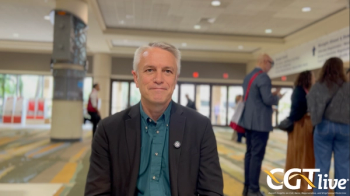
Slowing Tumor Growth in Glioblastoma With Novel AAV Therapy
Lisa Nieland, a PhD candidate from Lieden University Medical Center and Breakefield Lab at Mass Gen, discussed her work presented at the ASGCT 2024 meeting.
Glioma remains a highly aggressive cancer with few treatment options. As such, many research institutions are seeking to develop novel therapies and treatment methods for the disease.
Lisa Nieland, a PhD candidate from Lieden University Medical Center, is doing research pertinent to this field, focused on adeno-associated virus vector-based delivery of Staphylococcus aureus Cas9 (saCas9) guided by a single-guide RNA to target microRNA-21 (miR-21) coding sequences in the genome in vivo. CGTLive® interviewed her to learn more about her work, findings from which were presented at
CGTLive: Can you introduce yourself?
Lisa Nieland: I'm a graduate student in the lab of Xandra Breakefield, PhD, [investigator of neurology, Mass General Research Institute, and professor of neurology, Harvard Medical School] located at Massachusetts General Hospital in Boston. I am actually from the Netherlands, and I'm performing my PhD in Lieden University Medical Center with Professor Marike Broekman, MD, PhD, who's actually a neurosurgeon. So I'm performing the research in Xandra's lab, but the PhD I will be graduating with from the Dutch University. That's a unique situation, and I'm very happy and glad I got the opportunity to work in Xandra's lab.
Can you tell us a bit about your research?
My PhD is focused on the glioma tumor microenvironment—so actually the interaction between the healthy brain cells and the tumor. Basically, a few years ago, other people in the lab targeted miR-21 as a biomarker in glioma—so glioma has very high levels of miR-21 and we saw actually that it's being transferred also to other cells in the tumor microenvironment. So we thought, okay, this is a very important target that we can maybe hit and down regulate in the tumor so that the tumor hopefully reduces their tumor growth.
That's when I kind of stepped into the research. We had already identified this marker. The research that I am [now] performing is targeting miR-21 with CRISPR. We use an AAV that consists of the CRISPR orthologs and then we can deliver this AAV in a mouse that has a glioma tumor. We were able to deliver these CRISPR/Cas into the tumor cells. These CRISPRs then specifically targeted the miR-21 and we saw very nicely that these mice started to live longer, significantly. So by reducing miR-21—although the tumors did not shrink—the mice survived longer. They still had the disease, they still got sick, but they I think I had like a 10 day longer survival time, which in glioma is pretty significant because glioma is like the most aggressive brain tumor in human adults—like a primary brain tumor that's very aggressive, and there's currently no cure. As such, we as scientists are really trying to develop new novel therapies; new strategies, because what we've been trying until now did not work, and I think over like the past 20 years—and my mentor, Dr. Breakefield and my mentor Dr. Broekman are really trying to take the next step and try to find new strategies. Because chemotherapy, immune therapy, we all try it in these solid tumors, these aggressive tumors, but unfortunately, we don't see good outcomes. It's not gonna cure the disease. So we really need to think out of the box. Therefore we are trying now to do this gene therapy, which I think is still not going to be a cure, but I think what we're now thinking for the next step is to have this miR-21 therapy in combination with chemotherapy or existing radiotherapy because what we saw is that we kind of get a window where the tumor plateaues. So instead of getting a very aggressive, steep curve of tumor growth, it stagnated; it stopped growing. I think in that window, we would be able to combine current available therapies to target the tumor at the same time, so with a combinational treatment to hopefully then have a better outcome and better effect because until now, the chemo is just not doing its job, unfortunately. So maybe we can create this kind of niche window where we then can have an improved outcome, hopefully. That's the whole aim.
This transcript has been edited for clarity.
REFERENCES
1. Glioblastoma Multiforme. Webpage. 2024. American Association of Neurological Surgeons. https://www.aans.org/en/Patients/Neurosurgical-Conditions-and-Treatments/Glioblastoma-Multiforme
2. Nieland L, Vrijmoet AB, Jetten IW, et al. All-in-One Adeno-Associated Virus Delivery for Therapeutic miR-21 Editing by saCas9 In Vivo. Presented at: ASGCT 27th Annual Meeting, May 7-10; Baltimore, Maryland. Abstract #113
Newsletter
Stay at the forefront of cutting-edge science with CGT—your direct line to expert insights, breakthrough data, and real-time coverage of the latest advancements in cell and gene therapy.




































